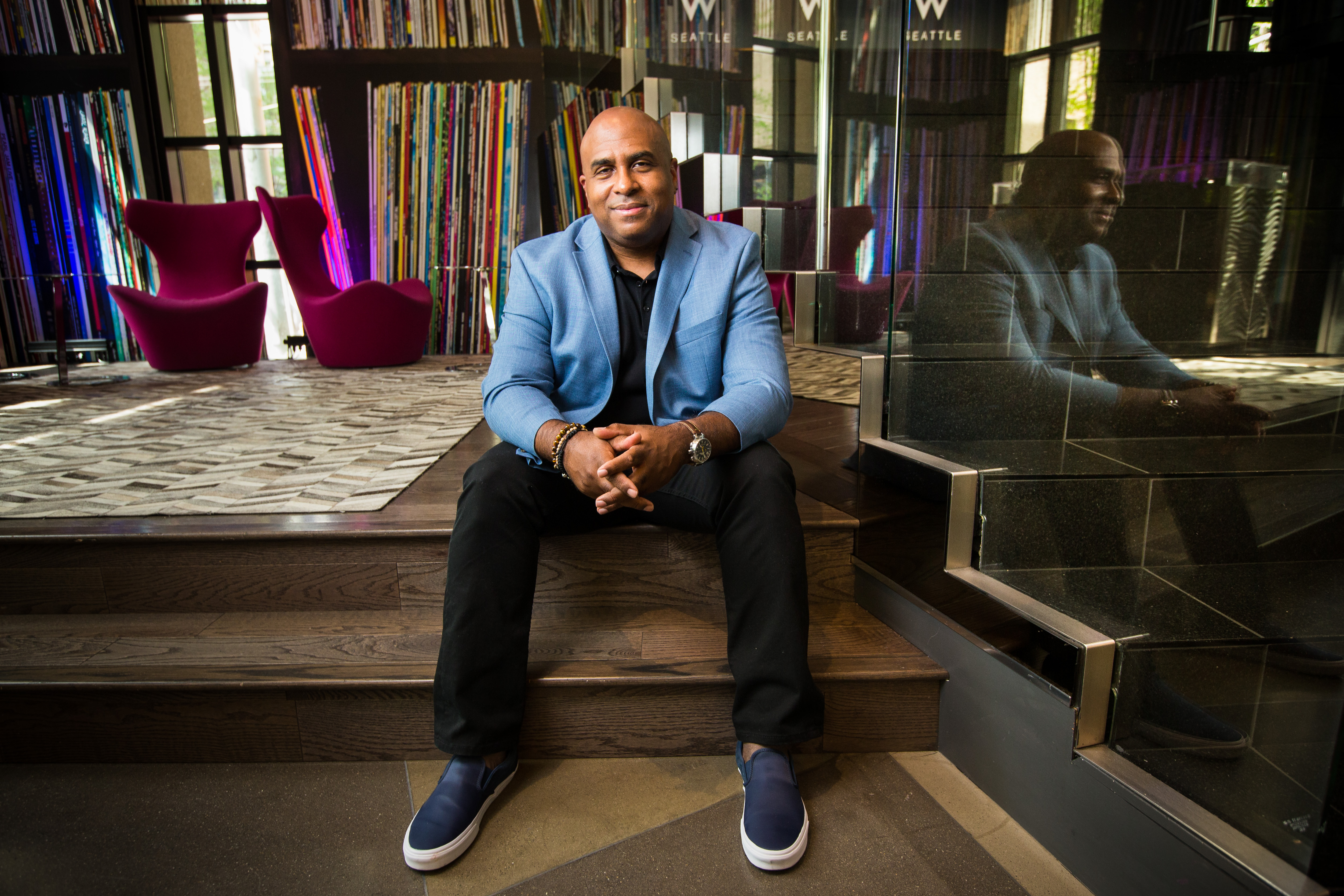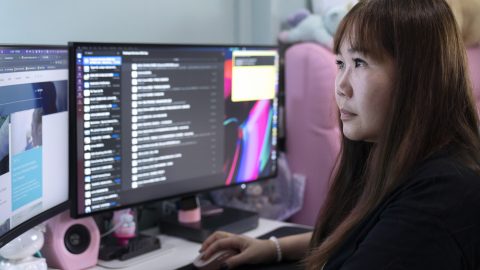Nothing but ‘net: The NBA’s new love for technology like AI
In NBA lingo, Garth Case has what the players call “court vision.”
Inside the blur of the game, he sees scoring opportunities before they develop. And within the sport’s deluge of data, he spots innovative possibilities rising among the terabytes.
Case, the NBA’s vice president of IT, helped develop a new, AI-powered tool that automatically sorts and curates the massive stream of game photos generated by 30 teams across 82 regular season games and the playoffs.
NBA Photo Sorter, which Case demoed earlier this month at Microsoft Build in Seattle, replaces the tedious method league photographers have long used to manually tag each game image with the names of players, teams, celebrities and more.
Built with Cognitive Search – a new AI-driven, content-understanding capability available from Microsoft – the platform saves NBA employees hundreds of hours of work while increasing content accuracy and unlocking new business scenarios. But, Case says, it is a first step that only hints at the tech’s enormous potential.
Transform caught up with Case after Build to ask him a bit more about his vision.
TRANSFORM: How much time does NBA Photo Sorter save the league’s photo department?
GARTH CASE: Say we had an event today. Photographers give us all their photos. Then another team would sit there, combing through all of those photos, determining who is in them and creating folders for those photos. Time would mount up.
Photos from one event could take up to four weeks to categorize. We can now reduce that four weeks down to about one day. When the system is properly trained, we can whip through it in a few hours.
But there’s something bigger behind this whole thing. There is this effort to bring all of our content together. Everything from videos to photos to tons of articles that get published. There’s a lot of information generated through every game.

TRANSFORM: Interesting. Where do you see this AI platform providing even deeper benefits to the NBA?
CASE: The real value begins to come when we can spot more objects in the photos – not just who’s in it but what are they doing? Is it an action photo or a portrait? Is there a logo in it? What shoe is the player wearing?
These things are what make that moment you captured in time even more valuable.
TRANSFORM: Sounds like this platform may provide the league with a new way to monetize its digital content.
CASE: That’s what we are working towards. I know there’s a market for this.
TRANSFORM: What else do you see in the game data and what more can Cognitive Services do with it?
CASE: We come in touch with an enormous amount of content but we only focus on the pieces we need to use. We don’t pay attention to all the other pieces, the pieces that might have real value. That is where I see the ability of AI and big data to corral your information, take the time to understand what’s in it and figure out the value.
When it comes to photos, just because of habit, what people look at is, simply, who is in the photo. But maybe we can see that there are patterns connected with the photos. Maybe there are even patterns connected not just with the photos but with the data we merge with the photos. If a picture is worth a thousand words, imagine what having a deep understanding is worth.
TRANSFORM: Can you give me an example of an insight that AI might someday gain from ingesting years of game content like photos and video?
CASE: We look at our players when they’re on the court and we see how many times they run back and forth. All of that information, quite honestly, we’re getting it and we’re storing it.
But it’s not being put into one place where you can connect the dots. So, for example, let’s say one player ran up and down the court 1 million times. And on the millionth and one time, he tore his Achilles (tendon).
And within the data, maybe we also see that there are 100 more players who did the same thing on the same step. Identifying the pattern will allow us to take corrective action that not only influences the safety of the game but the health and longevity of our players.
That’s the power in this kind of technology. That’s what makes me excited. Hopefully, we study the information and figure out where the patterns are and make great corrections to improve the game.
Top image: Garth Case at the W Seattle. (Photos by Dan DeLong)









